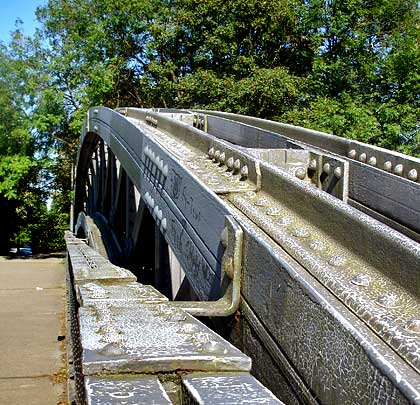Derwent bridge
Derwent bridge














When the Great Northern Railway arrived in Derby to challenge the mighty Midland in the 1870s, it crossed the city roughly at right angles to the existing line, incurring much expense for engineering works. One of its most notable achievements was the crossing of the River Derwent close to Little Chester, the original Roman site of what later became Derby.
The elegant bowstring arch suspension bridge was built by the local firm of Andrew Handyside at its works adjacent to the bridge, and the design was reproduced in ‘The Engineer’ in 1877. It carried two tracks at an angle of about 60 degrees to the river – from north-east to south-west – and also incorporated a side-span over an industrial spur known as the Duke Street branch. It also carried a footpath which was included at the request of Derby Corporation and built on cantilevered extensions of the main structural members.
After a busy life carrying coal trains, Skegness-bound daytrippers and much else, this section of the line closed in May 1968. Since then its destruction has been almost complete but the river bridge has been conserved and continues to provide a very useful route for pedestrians and cyclists. As the whole bridge is now a footpath, the original cantilevered section has been removed.







